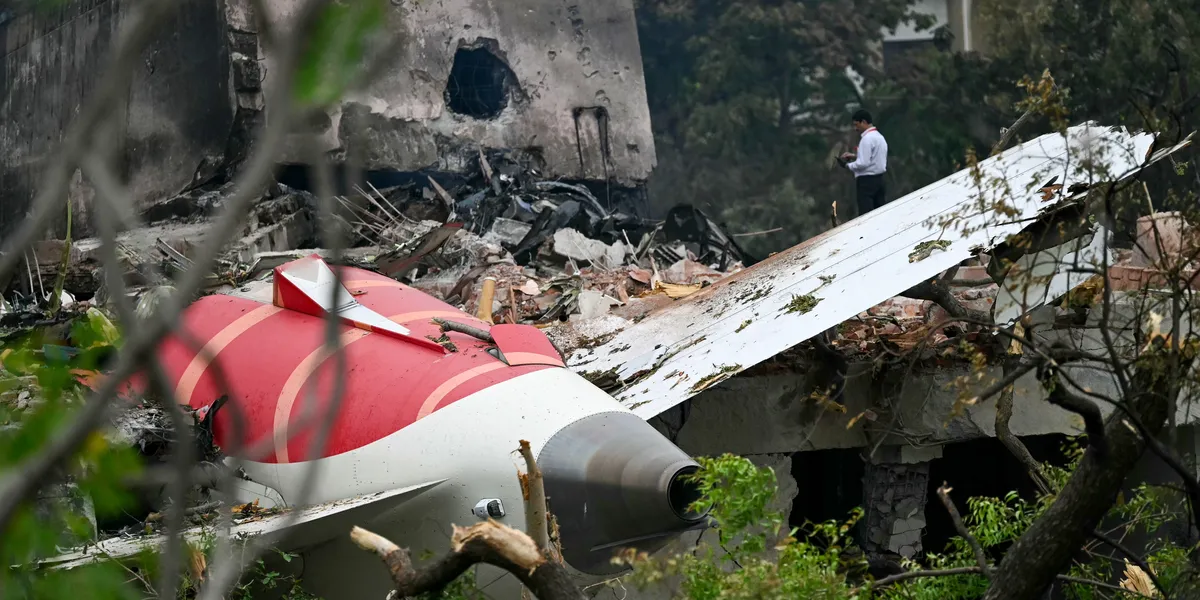When a disaster happens in the air, the world is curious to know why. In the aftermath of the Air India Boeing 787-8 Dreamliner crash near Ahmedabad, those reasons are thought to be found in two small, bright orange gadgets called black boxes. The catastrophic crash that killed over 240 individuals and resulted in further fatalities on the ground has been a watershed moment for aviation safety. It has raised grave concerns about Boeing’s production procedures and the international systems upon which we depend to make flying safe.

As its name suggests, a black box is always painted a bright orange, so in the event of a crash, it can be quickly located. All commercial passenger aircraft contain two of them: the Flight Data Recorder (FDR) and the Cockpit Voice Recorder (CVR). The FDR monitors thousands of flight parameters—anything from altitude and velocity to engine performance and control inputs. The CVR captures what’s going on in the cockpit, including pilot discussions, alert beeps and warnings, and even the slightest switches and clicks. As Airbus itself put it, learning from accidents isn’t merely necessary to making flying safer—it’s a matter of morality. That’s why these recorders must be made to survive just about anything: fire, explosions, impacts, even being submerged in water. They’re the best available tool for investigators to know precisely what went wrong during the final minutes of a flight.
Retrieving information from black boxes is a painstaking, meticulous process. After they’re recovered, they’re transported to specialized labs where professionals evaluate their condition. If they’re destroyed, technicians will have to carefully extract memory components and move them to functioning machines. Investigators then synchronize the voice and data recordings with radar and air traffic control logs to reconstruct a sequence of events of the flight, sometimes second by second. As per the Times of India, it can take two to four weeks to extract data from an undamaged black box. However, if it has been fire- or impact-damaged, the exercise can take many months. There is a great deal of cleaning, drying out, and even physical mending. Global regulations mandate that investigators publish an initial report within 30 days, but a complete investigation takes up to a year as teams go through black box records, maintenance data, weather patterns, and eye-witness testimony.
For the Air India disaster, investigators are counting on the black boxes to determine if the cause was mechanical failure, engine failure, human mistake, or a combination of those. Critical hints—such as a mayday call from the cockpit, the way the plane struggled for altitude, or the location of the landing gear—will be trapped in those recordings to be discovered. This isn’t a bad day for the families who lost loved ones—it’s a major crisis for Boeing and the wider aviation community. The Dreamliner has had an unblemished safety record since its launch in 2011. But as has been well-documented by Leeham News, Boeing’s recent commercial aircraft programs—the 737 MAX and the KC-46A tanker among them—have all been dogged by design, development, quality, and in a few instances, safety issues.
From the two fatal 737 MAX crashes to battery blazes and even the most recent occurrence where a door panel blew off in mid-air, Boeing has come under heightened criticism. Every new issue erodes the public’s faith in one of the world’s most significant aerospace giants. This most recent crash has revived fears that have smoldered for years. Whistleblowers and former engineers have long cited production-line shortcuts and the adequacy of regulators’ oversight. Sam Salehpour, a former Boeing quality engineer, described seeing employees jamming parts into position and asserted that numerous gaps on the Dreamliner’s fuselage went unsealed, potentially weakening the plane to structural fatigue over time.
Retired FAA engineer Joe Jacobsen summed it up succinctly in an interview with The National Desk when he said the FAA has been too accommodating to Boeing. “The FAA needs to be a regulator,” he said. “They need to do their job.” As for now, the U.S. Department of Justice is probing whether Boeing broke the conditions of a prior legal settlement concerning previous crashes. Victims’ families have labeled Boeing’s recent legal settlements “morally repugnant.” At stake here is not merely Boeing’s reputation—this is the integrity of the entire system of aviation oversight.
The repercussions of the Air India disaster have been quick. Boeing’s share price fell sharply, pulling down suppliers and even some rivals such as Airbus. Users of the Dreamliner are under increased scrutiny, and regulators are debating whether additional inspections or software patches might be required. Boeing’s shares declined 7.7% in pre-market trading the following day after the crash and closed at $203.55—a sudden reversal after a good start to the year. Lawsuits, new rules, and changes in airline orders are all possibilities. Airlines might even look to Airbus for substitutes.
But for most of us, the biggest concern is simple: is it still safe to fly? That answer will come from the dedicated work of crash investigators, the hard truths locked inside those black boxes, and the willingness of manufacturers and regulators to take action, learn from mistakes, and do better.
